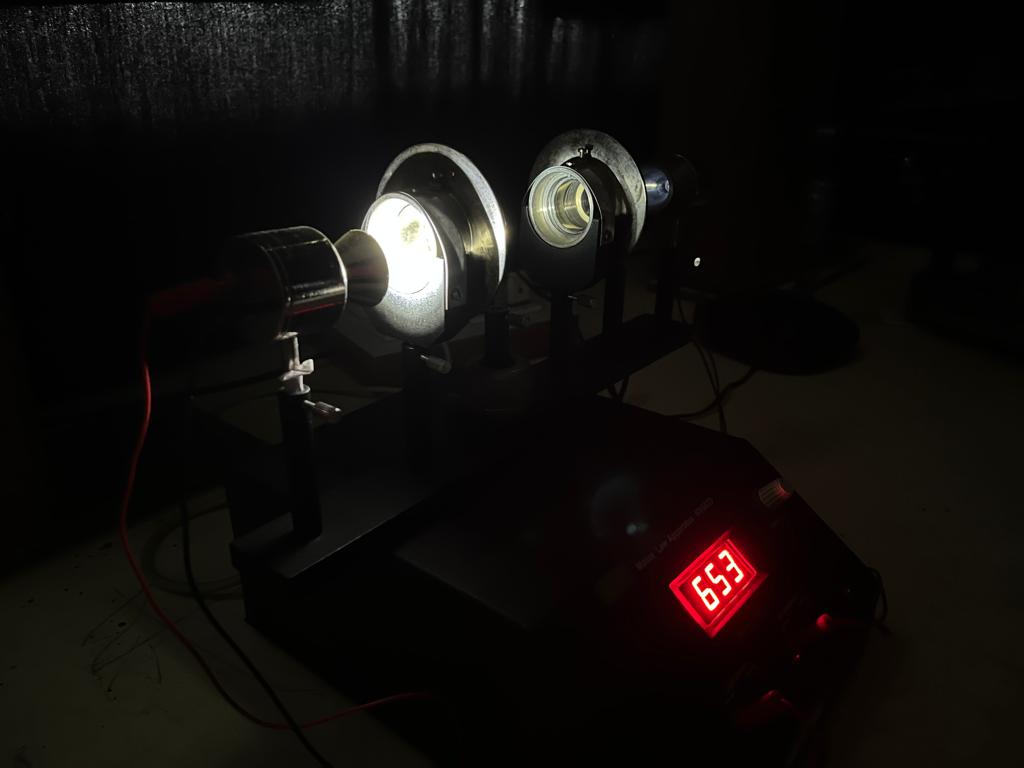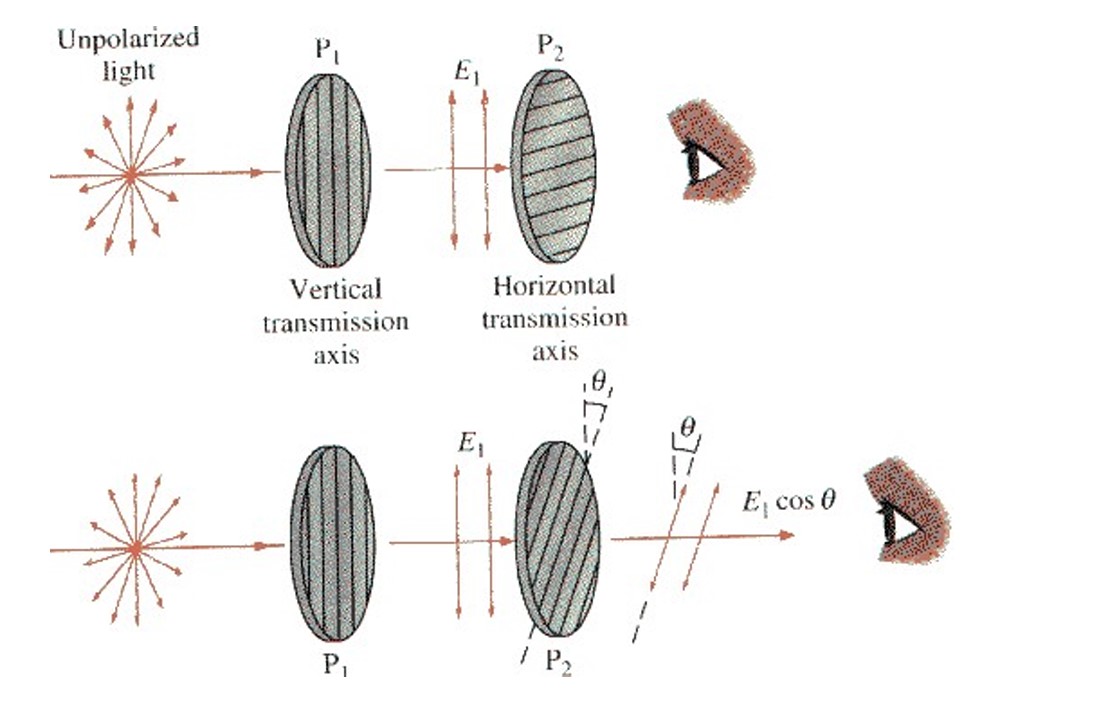Theory
The light coming from the Sun, candle light, and light emitted by a bulb is an ordinary light and is known to be un-polarized.
In an un-polarized light electric and magnetic field vectors vibrate in all possible directions perpendicular
to each other and also perpendicular to the direction of propagation of light.
The unpolarised light can be considered to be composed of two linear orthogonal polarization states with complete incoherence.
When unpolarized light is incident on an ideal polarizer, the intensity of the transmitted light is one-half of the incident light.
Also if the polarizer is rotated w.r.t. incident light there is no change in the irradiance of the transmitted light
i.e. its intensity remains half of the incident light.
and allowing light waves having vibrations in only one plane.
Such materials are called Polaroids.
This filtering is possible due the structure of the material that is having its cells
arranged in a straight line manner only in one direction (parallel to the pass axis of polarizer).
This phenomenon of filtering and producing light waves having vibrations confined
to one particular direction is called polarization.
Polarization is a property of a material by which
light waves are filtered and made directional.
called analyzer, transmits light depending on the orientation of its axis with the polarizer. The intensity of light transmitted
through the analyzer is given by Malus’ law.
The law describes how the intensity of light transmitted by the analyzer
varies with the angle that its plane of transmission makes with that of the polarizer.
"The intensity of the transmitted light varies as the square of the cosine
of the angle between the two planes of transmission."

In an un-polarized light electric and magnetic field vectors vibrate in all possible directions perpendicular
to each other and also perpendicular to the direction of propagation of light.
The unpolarised light can be considered to be composed of two linear orthogonal polarization states with complete incoherence.
When unpolarized light is incident on an ideal polarizer, the intensity of the transmitted light is one-half of the incident light.
Also if the polarizer is rotated w.r.t. incident light there is no change in the irradiance of the transmitted light
i.e. its intensity remains half of the incident light.
Polarization:
Certain transparent materials such as Nicol, Tourmaline are capable of filteringand allowing light waves having vibrations in only one plane.
Such materials are called Polaroids.
This filtering is possible due the structure of the material that is having its cells
arranged in a straight line manner only in one direction (parallel to the pass axis of polarizer).
This phenomenon of filtering and producing light waves having vibrations confined
to one particular direction is called polarization.
Polarization is a property of a material by which
light waves are filtered and made directional.
Malus’s Law:
When light falls on a polarizer, the transmitted light gets polarized. The polarized light falling on another Polaroid,called analyzer, transmits light depending on the orientation of its axis with the polarizer. The intensity of light transmitted
through the analyzer is given by Malus’ law.
The law describes how the intensity of light transmitted by the analyzer
varies with the angle that its plane of transmission makes with that of the polarizer.
Statement of Malus Law
"The intensity of the transmitted light varies as the square of the cosine
of the angle between the two planes of transmission."





Click here for Instructions for use.
makes it difficult to get a specific value.
Hover your mouse cursor on the slider
to start the simulation.
If the slider is not working, try to click on it or refresh the
page and move the slider.